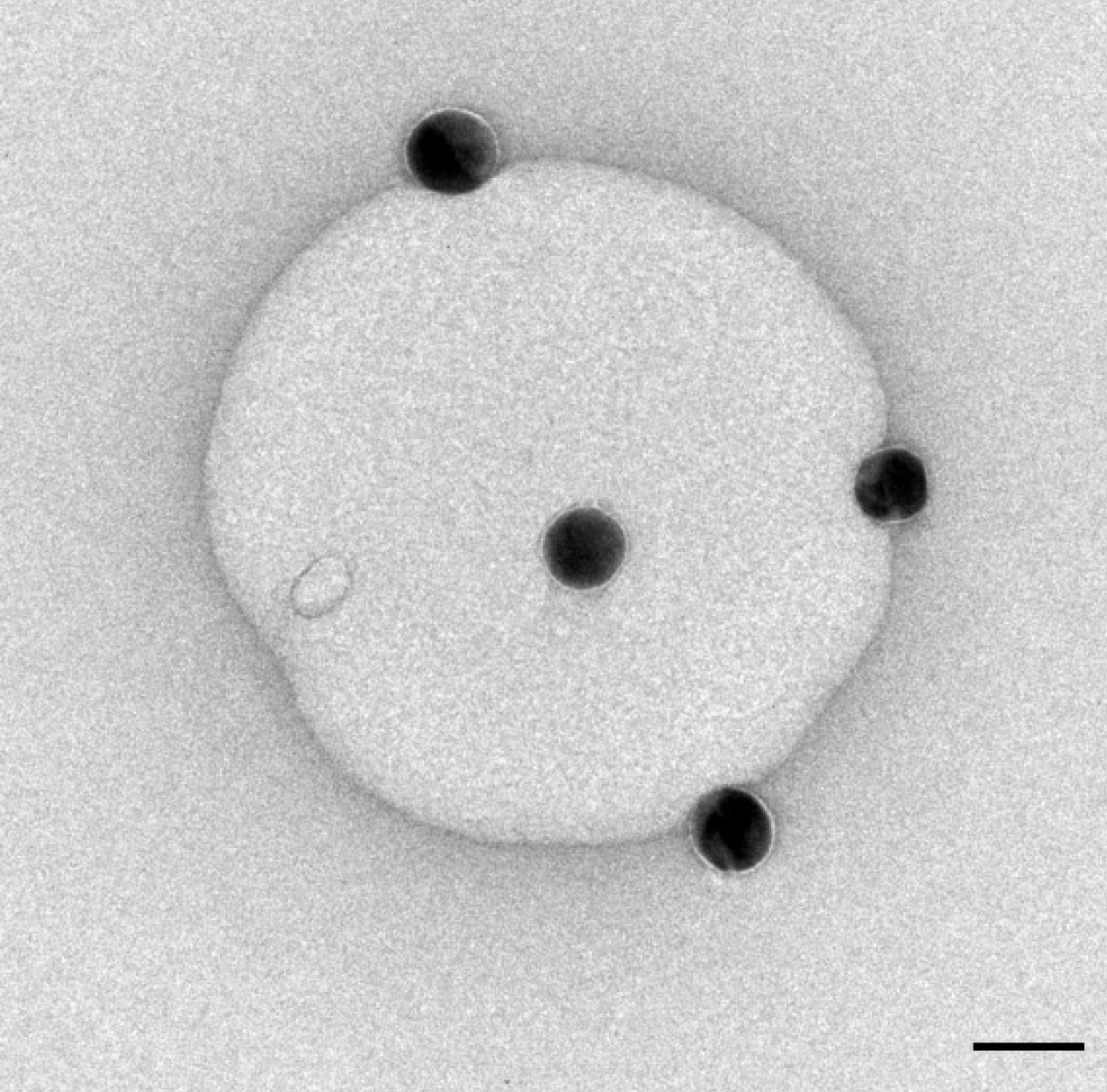

Imperial researchers have tested whether gold nanoparticles could be toxic to cells, finding how they affect lipid membranes depends on their size.
Nanoparticles (up to 100 nanometres in diameter) are increasingly being manufactured for use in medicine, technology, cosmetics and food, but their possible impacts on human health are unknown.
Smaller nanoparticles have a better chance of entering inside the membrane compared to larger sizes, which should be taken into account when predicting which nanoparticles may be hazardous. Dr Claudia Contini
The research, published today in Nature Communications Chemistry, shows that small nanoparticles (5-10 nm) are most capable of perturbing membranes, which the researchers say should be taken into account when designing nanoparticles for use in the body.
Nanoparticles come in a wide variety of sizes, shapes and materials, and biological systems are complex, making determining how they interact with each other difficult to study. However, researchers know that one of the key first steps in toxicity is when a particle interacts with the membrane around a cell.
Particles can attach to the outsides of membranes, become embedded within in them, or be completely engulfed and enter the cell. Each of these outcomes can affect the cell in different ways; for example, distorting the membrane can affect its elastic properties, potentially affecting its ability to function.
Now, researchers from Imperial College London have tested gold nanoparticles with artificial cells, finding that how they interact depends on the size of the nanoparticles, with smaller nanoparticles (5-10 nm) most able to enter cell membranes.
Size matters
Lead researcher Dr Claudia Contini, from the Department of Chemistry at Imperial, said: “The expanding production of nanoparticles has led to increasing concerns regarding their impact on human health and the environment in general. Identifying nanoparticles hazardous to natural organisms is difficult given the wide variety of nanoparticles, their diverse properties and the complexity of biological entities.
“Using a simplified system, we were able to show that the fate of a nanoparticle in contact with a membrane is determined by its size. Smaller nanoparticles have a better chance of entering inside the membrane compared to larger sizes, which should be taken into account when predicting which nanoparticles may be hazardous.”

Gold nanoparticles are being investigated for a number of uses inside the body, including aiding in tumour detection and for delivering drugs or gene therapy agents. The nanoparticles are usually ‘functionalised’ – coated with molecules that help them target specific receptors in cell membranes that allow them to interact with or enter the cell.
However, it was unknown whether functionalisation was always necessary for interaction, or whether the nanoparticles could interact spontaneously. The team tested different sizes of non-functionalised gold nanoparticles with artificial cells that mimic the properties of biological cell membranes. Using these simple cell mimics allowed them to focus on the membrane-nanoparticle interactions.
Designing future nanoparticles
They found that larger nanoparticles (50-60 nm) sometimes adhered to the exterior of the membrane, but caused minimal disruption, medium-sized nanoparticles (25-35 nm) more often adhered to the surface and caused some distortion, and smaller nanoparticles (5-10 nm) significantly distorted the membrane, bending it inwards sometimes with several nanoparticles stacked together, causing a tubular distortion.
Smaller nanoparticles may therefore cause unwanted toxic side-effects in the body when not functionalised – a factor the team say should be taken into account when designing medical nanoparticles.
The research findings also have an upside – sometimes it is useful if nanoparticles enter the membranes, for example when delivering drugs directly to cells. Smaller gold nanoparticles may thus make better drug-delivery systems if they are more easily drawn into the cell.
-
‘Size dependency of gold nanoparticles interacting with model membranes’ by Claudia Contini, James W. Hindley, Thomas J. Macdonald, Joseph D. Barritt, Oscar Ces & Nick Quirke is published in Nature Communications Chemistry.
Supporters


Article text (excluding photos or graphics) © Imperial College London.
Photos and graphics subject to third party copyright used with permission or © Imperial College London.
Reporter
Hayley Dunning
Communications Division

Contact details
Tel: +44 (0)20 7594 2412
Email: h.dunning@imperial.ac.uk
Show all stories by this author




Leave a comment
Your comment may be published, displaying your name as you provide it, unless you request otherwise. Your contact details will never be published.